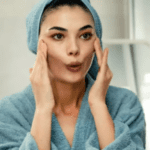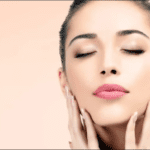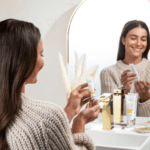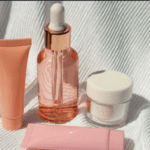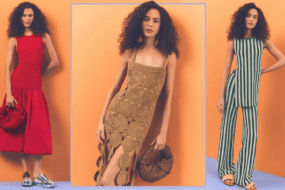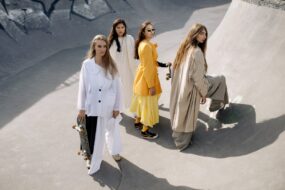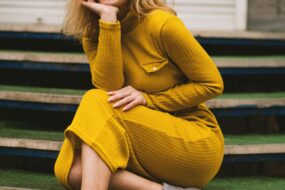
Fashion is more than just clothing; it is a language, a form of self-expression that conveys emotions, personality traits, and even societal status. One of the most influential aspects of fashion is color. The colors you wear can have a profound impact on how others perceive you and how you feel about yourself. This concept is known as color psychology, which studies how different colors influence human emotions and behavior. Understanding color psychology in fashion can help you make more intentional choices in your wardrobe, ensuring that your clothing aligns with your desired message and mood.
The Power of Color Psychology
Color psychology suggests that different hues evoke specific psychological and emotional responses. The colors you wear can communicate confidence, authority, creativity, tranquility, or even aggression. Additionally, cultural and personal associations with certain colors may affect their interpretations.
Breaking Down Colors in Fashion
1. Red: The Color of Power and Passion
Red is bold, intense, and impossible to ignore. It is associated with energy, passion, love, and dominance. Wearing red can make you appear more confident, assertive, and attractive. Studies show that people wearing red are often perceived as more powerful and influential. However, red can also be seen as aggressive or overly intense if not balanced well in an outfit.
When to Wear Red:
- For first dates or romantic occasions, as it signifies passion and attraction.
- In business settings where you want to project confidence and authority.
- When you need an energy boost or want to stand out in a crowd.
2. Blue: The Color of Trust and Serenity
Blue is one of the most universally liked colors and is often associated with calmness, reliability, and professionalism. Lighter shades of blue exude tranquility and relaxation, while darker shades, such as navy, represent intelligence, authority, and confidence.
When to Wear Blue:
- In professional settings, as it conveys trust and competence.
- For casual, relaxed occasions where you want to appear approachable.
- During stressful situations to evoke a sense of calm and clarity.
3. Black: The Color of Elegance and Mystery
Black is a staple in fashion due to its timeless elegance and versatility. It conveys sophistication, mystery, power, and formality. Black outfits can create a slimming effect and exude confidence and strength. However, too much black can sometimes be perceived as overly somber or unapproachable.
When to Wear Black:
- At formal events for an elegant, sophisticated look.
- In professional environments to project authority and confidence.
- On days when you want a sleek, polished appearance.
4. White: The Color of Purity and Simplicity
White is often associated with cleanliness, purity, and minimalism. It exudes a fresh and modern vibe, making it a popular choice for summer wardrobes and professional settings. However, white can also give off an impression of being distant or overly formal if not styled properly.
When to Wear White:
- For a crisp, clean look in professional settings.
- In warm weather for a light and airy feel.
- To create a minimalist and sophisticated aesthetic.
5. Yellow: The Color of Optimism and Creativity
Yellow is a vibrant, cheerful color that symbolizes happiness, optimism, and energy. It is often associated with creativity and playfulness. However, too much yellow can be overwhelming and may evoke feelings of anxiety in some people.
When to Wear Yellow:
- When you want to brighten your mood or others’ perceptions of you.
- In casual or creative settings where you want to appear lively and energetic.
- As an accent color to add a pop of vibrancy to neutral outfits.
6. Green: The Color of Balance and Growth
Green represents nature, growth, and harmony. It is also linked to wealth, prosperity, and stability. Darker greens exude sophistication, while lighter greens can appear refreshing and youthful.
When to Wear Green:
- To convey balance, stability, and a connection to nature.
- In professional settings to evoke a sense of reliability.
- For outdoor or casual events to appear fresh and lively.
7. Purple: The Color of Royalty and Creativity
Historically associated with royalty and luxury, purple symbolizes creativity, wisdom, and mystery. Lighter shades, such as lavender, have a calming effect, while darker purples exude elegance and sophistication.
When to Wear Purple:
- To showcase creativity and uniqueness.
- For formal events where you want to appear regal and elegant.
- When you want to evoke a sense of mystery and intrigue.
8. Pink: The Color of Femininity and Romance
Pink is often linked to femininity, kindness, and romance. While softer shades convey innocence and playfulness, bolder shades like fuchsia represent confidence and modernity.
When to Wear Pink:
- On dates or social outings to appear warm and friendly.
- In business settings as a confident yet approachable statement.
- To add a soft, playful touch to an outfit.
9. Orange: The Color of Enthusiasm and Energy
Orange is a high-energy color associated with excitement, warmth, and enthusiasm. It is often worn by people who are extroverted and adventurous. However, because of its boldness, it is not always appropriate for formal or professional settings.
When to Wear Orange:
- For social events where you want to appear vibrant and fun.
- In casual or creative workspaces to encourage enthusiasm.
- As an accent color for a bold fashion statement.
10. Brown: The Color of Stability and Reliability
Brown is an earthy tone that represents reliability, comfort, and warmth. It is often seen as grounding and mature but can also be perceived as dull if not styled properly.
When to Wear Brown:
- To create a warm, approachable look.
- In casual or professional settings where you want to appear trustworthy.
- To evoke a sense of nature and organic beauty.
How to Use Color Psychology in Your Wardrobe
- Identify Your Goals: Consider what message you want to convey with your outfit and choose colors accordingly.
- Mix and Match: Balance bold colors with neutrals to create a harmonious look.
- Use Color Accents: If you’re hesitant about wearing bright colors, incorporate them through accessories like scarves, ties, or shoes.
- Consider Cultural Contexts: Different cultures have unique associations with colors, so be mindful of their meanings in various settings.
- Dress for the Occasion: Adapt your color choices based on the formality and nature of the event.
Conclusion
The colors you wear are more than just aesthetic choices; they influence perceptions, moods, and emotions. By understanding the psychology behind different colors, you can use fashion to your advantage—enhancing your confidence, making a statement, and expressing your personality. Whether you’re dressing for a job interview, a romantic date, or a casual day out, thoughtful color choices can help you leave a lasting impression.






